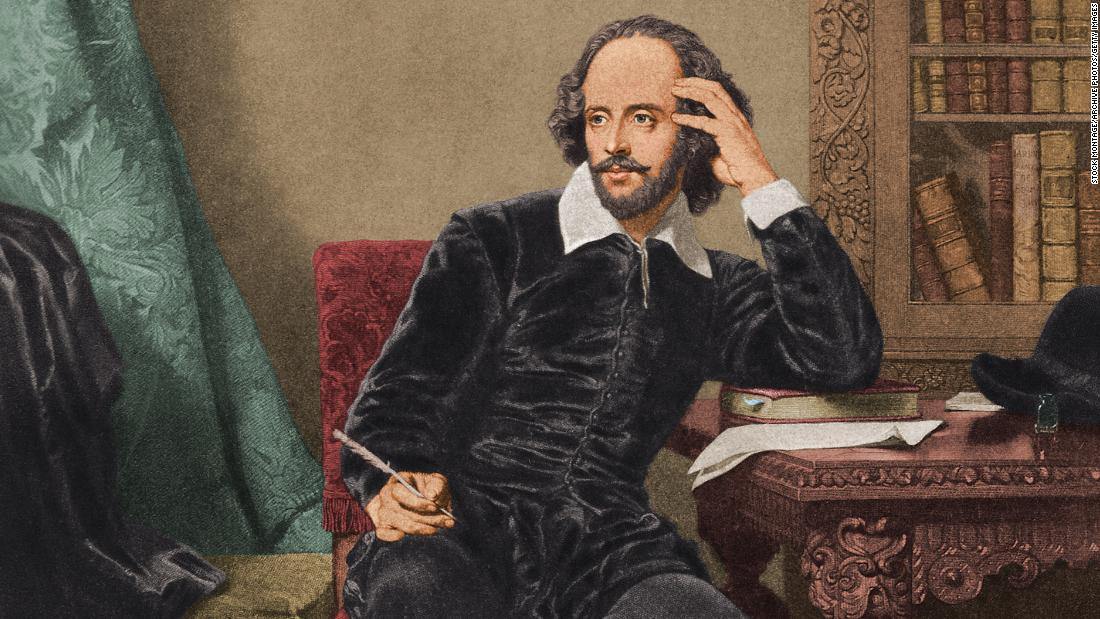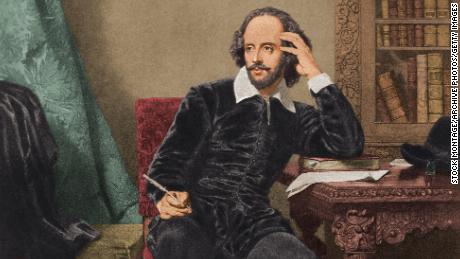Instead, the film — with an all-star cast that includes Alexander Skarsgård, Nicole Kidman, Anya Taylor-Joy, Ethan Hawke, Björk and Willem Dafoe — is an adaptation of one of Shakespeare’s sources, the legend of Amleth in the medieval historian Saxo Grammaticus’ “History of the Danes.” “The Northman” overleaps “Hamlet.”
Yet people today usually only know of Saxo because of Shakespeare. Debuting in the US on April 22, one day before the annual celebrations of Shakespeare’s birthday on April 23, “The Northman” exploits the same Shakespearean text it avoids.
“The Northman” is a Shakespherean adaptation — note the spelling — a retelling inspired by materials that aren’t Shakespeare’s texts but are widely known today in relation to Shakespeare.
It’s a different kind of Shakespherean adaptation than one of the most famous of this genre: Stephen Spielberg’s “West Side Story.” That’s a 2021 remake of a 1961 film adaptation of a 1957 stage adaptation of Shakespeare’s “Romeo and Juliet,” which was a 1595 stage adaptation of a 1562 English poem that translated a 1560 French translation of a 1535 Italian novella. Where “The Northman” elides Shakespeare’s text, “West Side Story” is a refraction of adaptations.
We’re in an era of Shakespherean adaptations filled with elisions and refractions. In an elision, the middle drops out. “The King” on Netflix leveraged Shakespearean associations with England’s Henry V to generate an audience while shunning Shakespeare’s actual text. It told the same story as Shakespeare, but in modern language.
A refraction is a never-ending infinity mirror reflecting Shakespeare into the abyss. There’s adaptation refraction in the Netflix series “House of Cards,” an American streaming television adaptation of a British cable adaptation of an earlier novel adaptation of “Richard III,” Shakespeare’s play of politics, ambition and villainy (itself based on earlier English plays and histories).
Joel Coen’s “Macbeth” is a straightforward adaptation. It just gets bonus points because Denzel. “Succession” and “Empire” are King Lear in the corporate world — regular adaptations. Nothing to see here. “Ophelia,” starring Daisy Ridley, told the story behind her story in Shakespeare’s play. These shows work like older adaptations, such as Akira Kurosawa’s “Throne of Blood” (based on “Macbeth” from 1957), Tom Stoppard’s “Rosencrantz and Guildenstern Are Dead” (on “Hamlet” from 1966), Julie Taymor’s “Titus” (on “Titus Andronicus” from 1999) and Vishal Bhardwaj’s “Omkara” (on “Othello” from 2006): rewriting Shakespeare’s stories in modern settings, shifting them from the theater into new media, performing the plays in business casual, riffing on the hidden backstories of characters.
But that earlier age of adaptation has now been enshrined as tradition. What once was radical is now passé. How will writers do something new with Shakespeare when adaptation has been done to death?
They will go deeper into the Shakesphere — the massive realm of sources, contexts, performances, criticism, adaptations and appropriations surrounding the plays and poems Shakespeare wrote. He is the sun that holds this system together but, in this new era, fly too close and you might get burnt.
“Game of Thrones” had both refraction and elision. HBO made a television adaptation of George R.R. Martin’s novels, which adapted the English history that Shakespeare wrote several plays about, called the Wars of the Roses. Yet Martin didn’t adapt Shakespeare’s plays directly. He went around Shakespeare to the history behind his plays. (HBO and CNN share a parent company.)
Or, Shakespherean adaptations side-step his texts to go into the playwright’s life. Films like “All Is True” and television shows such as “Upstart Crow” and “Will” adopt the approach of “Shakespeare in Love,” reading plots and characters from the plays back into the biography of their author.
In contrast, “Station Eleven” turns to Shakespeare’s afterlives. The HBO show — a television adaptation of a novel by Emily St. John Mandel — doesn’t adapt one of Shakespeare’s plays, but tells the story of a post-apocalyptic Shakespearean acting troupe.
Elisions, refractions, speculative biographies, theatrical afterlives — these Shakespherean adaptations capitalize on the playwright’s cultural prominence to generate an audience but dodge his actual plays and poems. The push and pull of Shakespeare in these adaptations reflects the simultaneous nausea and enthusiasm many feel toward the author.
His stories are captivating, the language beautiful, the performances inspiring, but Shakespeare is also crammed down our throats in school. English teachers who have to sell “Hamlet” to high-school students every year are very grateful for Alexander Skarsgård’s finely sculpted Viking abs in “The Northman.”
Shakespherean adaptations allow authors and audiences to simultaneously embrace and reject him. This approach goes all the way back to a 1681 “King Lear” that went around Shakespeare’s 1605 play to restore the happy ending from its source. “The Lion King” on Broadway was Shakespherean — an adaptation of an adaptation of “Hamlet.” “The Northman” isn’t even Saxo Grammaticus’ first film credit. A 1994 film, “Prince of Jutland,” had Christian Bale as Saxo’s Amleth. But the genre has shifted from the margins to the mainstream — bigger budgets and bigger audiences.
Some will enjoy these stories without feeling like — without knowing — they’re being force-fed Shakespeare. Others revel in the opportunity to explore niche knowledge that goes beyond the plays to their sources and afterlives. And scholars like me love Shakespherean adaptations because they show the wild ways literature moves through history.
Typically, audiences engage with entertainment directly — did you love it or hate it? Adaptations can work differently. Audiences often tend to look beyond the story in front of them to consider it in relation to its source — what’s the same and what’s different? Attention shifts from the internal elements of the story — plot, character, and theme — to questions about how the artwork was created. The joys of Shakespherean adaptations come in tracking down and mapping out the complex, centuries-long literary histories behind them.
You may celebrate Shakespeare’s birthday every April 23 or want to slash him from the curriculum. Shakespherean adaptations call us beyond expressions of personal taste into understandings of how we got here. They help us ask why this 400-year-old English playwright remains such a massive cultural phenomenon in the modern world. They help us see how Shakespeare moves through time.


